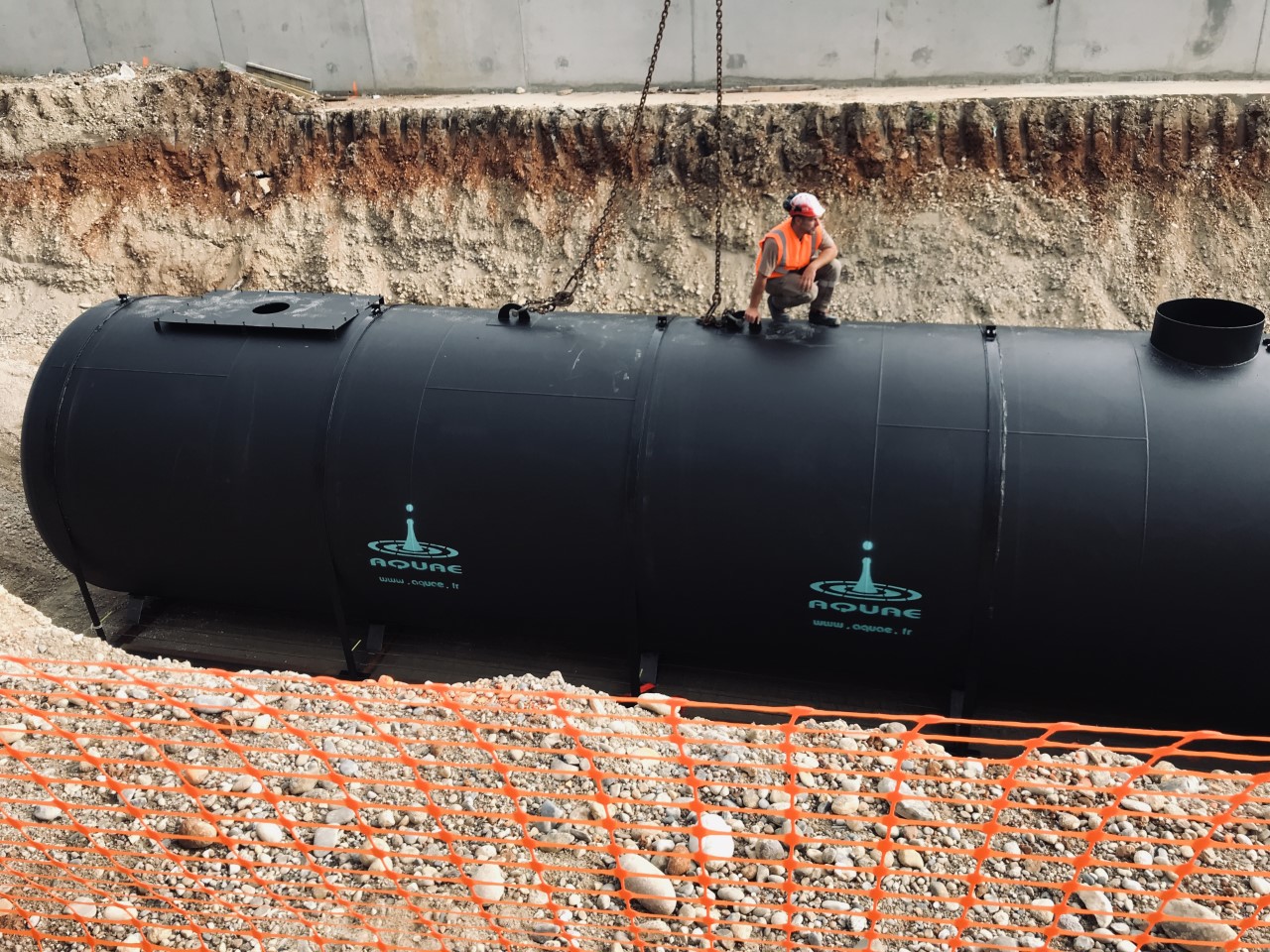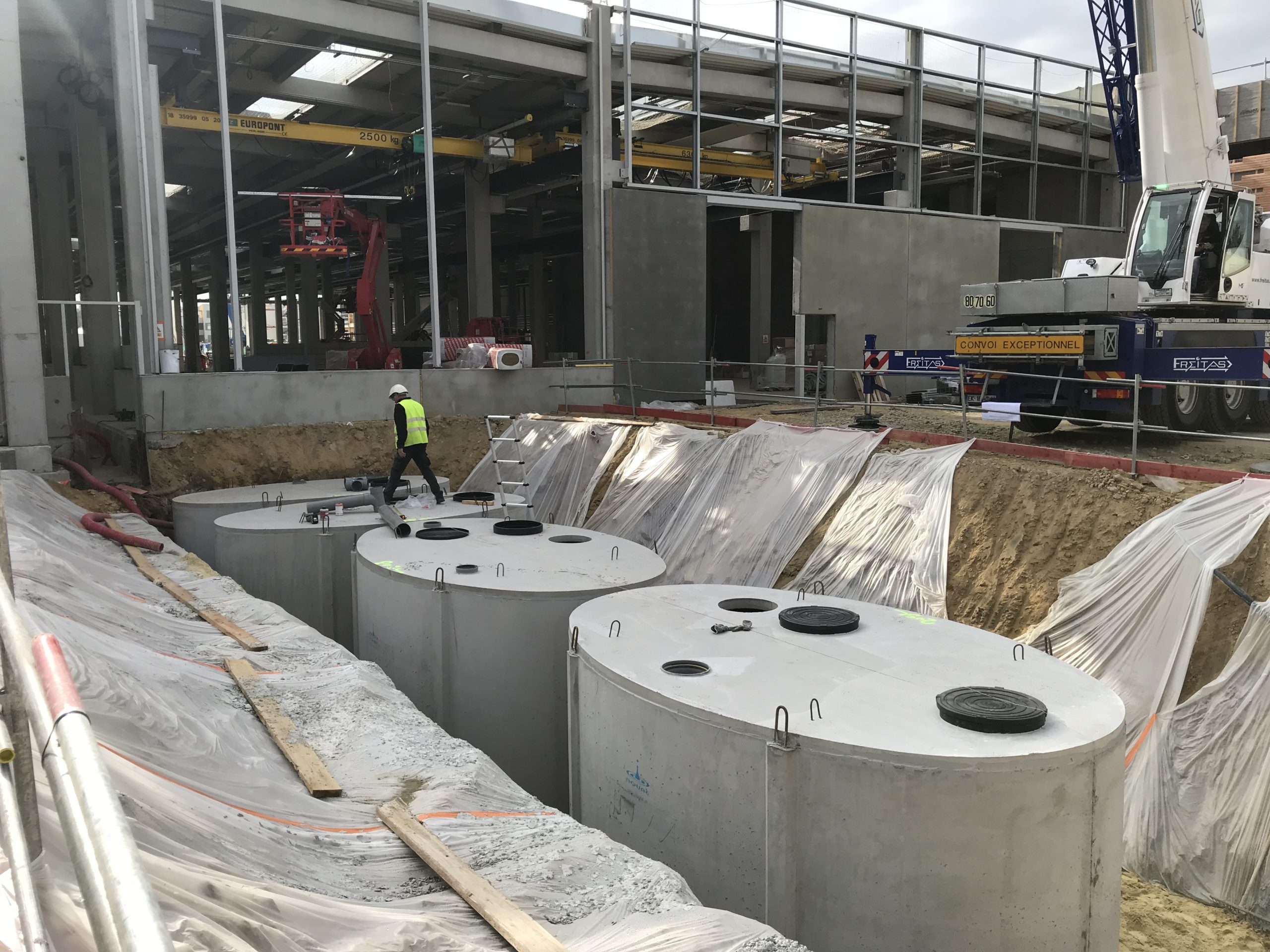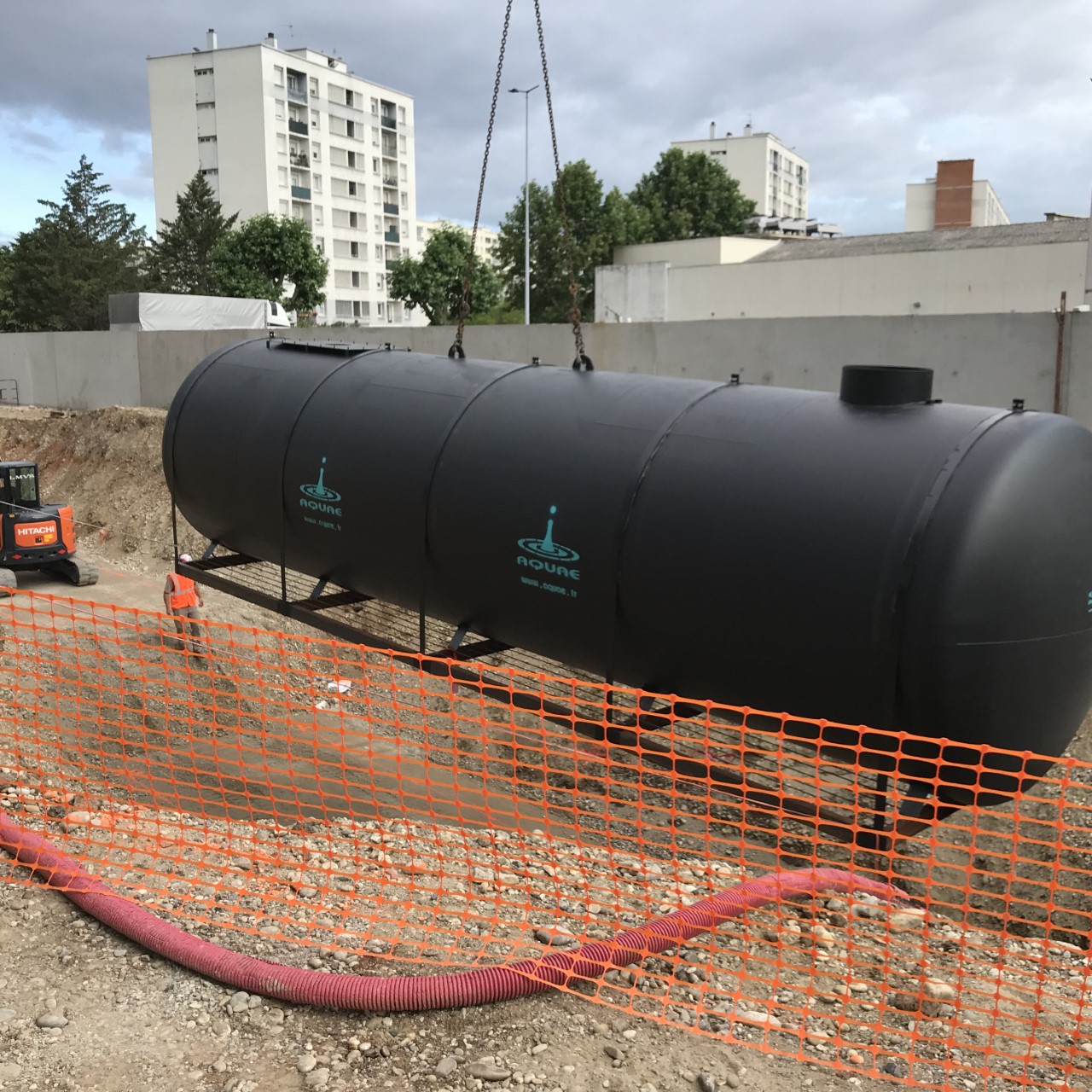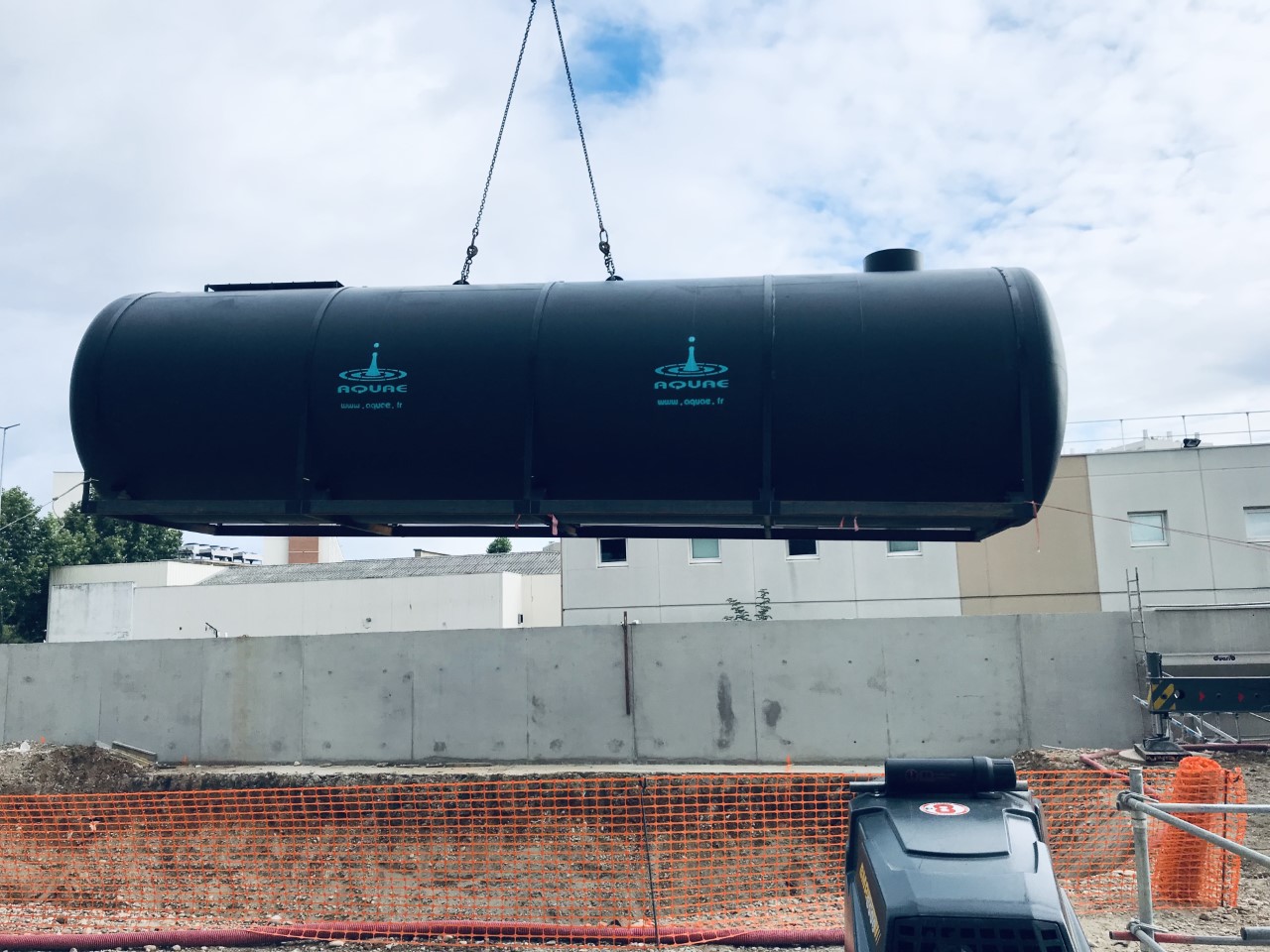Cisterns and reservoirs
The storage of rainwater can respond to two independent but complementary approaches.
- The regulation of rainwater collected from waterproofed surfaces.
When constructing a building, local regulations increasingly require stormwater to be stored temporarily.
This retention system makes it possible to regulate heavy precipitation by delaying its evacuation to the storm water network, or the infiltration zone, in order to avoid saturation.
- The use of rainwater from inaccessible roofs, for non-potable uses, in accordance with the regulations in force, in particular the decree of August 2008, which defines the necessary technical recommendations.
The storage is placed inside or outside a building,
The size, configuration and constraints related to the construction of the land make it possible to define the shapes and types of materials of the tanks in order to meet the technical and financial requirements.





Cisterns
Concrete
To bury outside
From 2 to 20 m3, the concrete tanks offered are circular or oval in shape, to avoid the appearance of biofilm which develops particularly in the corners.
The advantage of concrete is above all the solidity of the material which allows a simple operating procedure.
In addition, the calcium carbonate contained makes it possible to neutralize rainwater which by nature has a rather acidic pH.
Concrete tanks are designed to directly receive the overhanging filter.
This system makes it possible to manage the overflow of the tank directly through the filter.
Concrete tanks can be twinned in order to obtain larger storage volumes (up to 60 m3 for example with three tanks of 20 m3)
There are several categories of cisterns depending on burial constraints, and passage directly above the cistern.

Inside the building
The technique most used in new construction resides in the realization of a masonry storage tarpaulin carried out by the shell lot, very often combined with a retention tarpaulin.
In this case, our intervention lies in the definition of the storage equipment for the crossings of walls and maintenance access to be provided.
In steel
To bury outside
Particularly suitable for volumes from 30 m3 to several hundred m3 (by twinning).
Our tanks have a polyurethane coating to protect against the risk of oxidation. They are designed and equipped according to their purpose: recovery of rainwater with integrated filtration. Rainwater retention with calibrated leakage flow or lift pump, etc ...
It is possible to combine two uses by compartmentalizing the cistern (rainwater recovery and storm retention). This solution simplifies installation, and saves installation and material.
Nozzles, manhole (s) and other accessories are custom designed, on a case-by-case basis.
The tanks can be delivered with their slab frames.
This solution saves precious time during implementation and prevents accidents at work.
The tank frame assembly is placed in the pit by lifting crane, the concrete is poured directly afterwards, without the presence of personnel in the pit.
In case of passage of vehicles, it will be necessary to provide a distribution slab.
Inside the building
System suitable for industrial sites requiring very large storage volumes as well as for small needs in renovation configurations where accessibility is very limited (single door).
The metal ferrule is made up of panels prepared in the factory and assembled on site by bolting.
The final waterproofing is ensured by a one-piece geomembrane made in the factory.
This is completely separated from the ferrule and the concrete slab by an anti-punching felt.
A stretched canvas fixed to the outside of the shell protects the liquid contained from any external aggression and pollution.
The various connections and pipe supports necessary for the operation of the installation are carried out on demand.
HDPE
To bury outside
From 2 to 60 m 3, these rotomoulded high density polyethylene tanks are self-supporting.
Food grade and UV treated
No risk of internal or external corrosion
Their advantage: Lightness and ease of transport.
The implementation procedure recommended by the manufacturer must be followed to avoid any risk of damage after backfilling.
Installs on a correctly dimensioned flat and smooth slab, secured by straps or slings to avoid any risk of movement in the event of a rising water table.
Inside the building
There is a wide choice of HDPE tanks in different shapes:

These tanks can be twinned and modular in order to integrate into sometimes cramped premises.